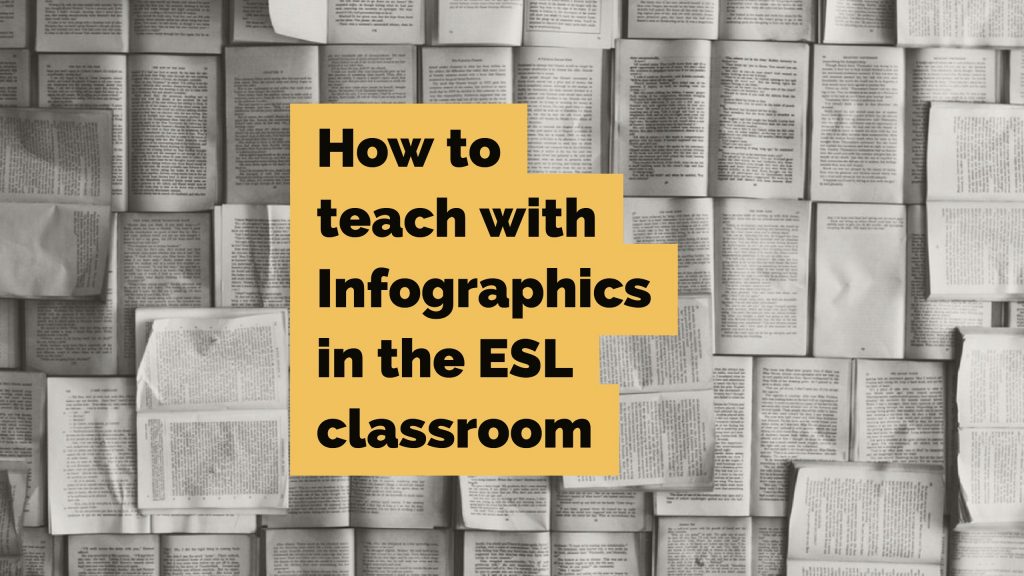How To Use Presentations In The ESL/EFL Classroom
As teachers, we would want to maximise all learning experiences for our students. It’s key that every class has all key ingredients for a well-crafted lesson, that’s to include, speaking, reading, writing, and listening. It’s possible to have classes that focus on just one skill but from the students’ perspective, this is rather tedious and repetitive. Presentations offer students to use all language skill sets and improve their confidence and presenting skills that are frequently used in the world of work. These types of classes are offering practical and much needed vocational skills for everyday life. Once students master the aspects of presenting, they often become improved communicators and are more aware of the subtleties of expression that are integral to our lives.
Why teach presentations in the ESL classroom?
Let’s dig deeper into the fundamentals of this skillset and tangible outcomes from having students practice speaking in front of a group of people. Presentation lessons should have these lesson objectives:
- To inform/ raise awareness of an important issue.
- To persuade the audience to do be motivated to change the status quo.
- Form part of a test or examination, demonstrating public speaking skills in a first or second language.
You can give students a task where they answer these questions before attempting a presentation to ensure they are on track:
- Why are you making the presentation? (awareness, informative, entertaining…)
- What do you want people to learn? (facts, a story, history…)
- How are you going to make it interesting? (visuals, music, dance, comedy…)
What are the benefits of incorporating presentations?
Recycling language
Remember that class you taught three weeks ago? Sure, as the teacher you might remember, but the students need to be constantly churning through all the vocab they’ve learned and seen in class. Presentations offer multiple topics in a single class with detailed listening opportunities.
Spoken grammar
Some students are incredibly good at writing and producing grammatically correct text. What they lack are the spontaneity and natural intonation that comes from speaking. Having them practice in a safe and positive environment will help them improve. If you can, try to record some of the speakers and play it back to them later. The visual feedback and queues will help them refine and hone their skills.
- Does the speaker use the past tense? YES/NO
- Any use of relative clauses? YES/NO
- Use of conditionals? YES/NO
- Use of emotions? YES/NO
Body language
Not all communication is verbal. Since English classes focus only on the nature of the language students may not have time using and practising more subtle communicative cues.
- Does the presenter use their hands? YES/NO
- Does the presenter make eye contact? YES/NO
- Does the presenter walk or move? YES/NO
Interpersonal skills
Relating to and getting on with others is just as essential as it ever was. Presentations allow students to work on their ability to relate to people who are different from them. In my personal teaching experience, I found that students often developed a greater sense of empathy and cultural understanding after presentations. They not only realised how others people and cultures live but are also able to compare it to their own lives. In addition to this, they can perhaps realise that how they explain an idea is more valuable than what idea they are expressing.
Content language integrated learning (CLIL)
Most classes are full of students from a variety of backgrounds, ages, class, occupations, and gender. They will also have a diversity of hobbies and interests. Tapping into these vast reserves of contained knowledge and wisdom will help cultivate a total learning environment. It also gets students to share the expertise and specialism, while not focussing too closely on the intricacies of the language. They can expand upon a topic and learn to persuade others or engage in a deeper discussion afterward.
- How was the subject explained?
- Was the topic detailed enough?
Task based learning
Presentations are goal orientated and a task based activity which focuses on meaningful language (sequencing, signposting and etc) in an authentic context. Uses this helps students experience language in a simulated real-life environment and thus becomes less theoretical.
Pleasure
Simply put it’s fun. Spending meaningful time together and sharing stories is part of human nature from the very beginning of time. Let’s be realistic, when was the last time you refused to hear a story from your friend?
Example lesson format with task objectives
If we put all of the above together in a presentation format it should work like so. I ask the students to create a presentation on their favourite historical figure. They would need to talk about their life, achievements and so on. At the end of the talk, the audience should know more about this person, creating awareness and generally being informed. We can create a template like so. Also note that 1 minutes may have 50 words, so a 5-minute talk is around 250 words for non-native speakers. Full presentation scripts and examples can be found on this blog page.
Historical figure presentation template
- Introduction – How do we define an important person from history? (2 minutes)
- My favourite historical figure (1 minute)
- Their childhood (2 minutes)
- Their education (2 minutes)
- Their achievements (2-3 minutes)
- Why I like them (1 minute)
- Questions (2 minutes)
Natural world presentation template
- Introduction – What is a fish? (2 minutes)
- Types of fish (5 minutes)
- Fish from around the world (2 minutes)
- My favourite fish (2 minutes)
- Conclusion (2-3 minutes)
- Questions (2 minutes)
Greatest inventions presentation template
- Introduction – What is an invention? (2 minutes)
- Talk about a problem (5 minutes)
- Introduce the invention which fixed the problem described earlier (4 minutes)
- Say why you liked it (2-3 minutes)
- Conclusion (2 minutes)
- Questions (2 minutes)
Manufacturing steel presentation template
- Introduction – What is steel? (2 minutes)
- Talk about the different types of steel and what they are used for/how it’s made (5 minutes)
- Say why you are interested in steel or steel products (2-3 minutes)
- Conclusion (2 minutes)
- Questions (2 minutes)
Presentation lesson: Controlled practice
The nature of the presentation is an example of free practice (or less controlled practice), this means that prior delivery, students will need to build their confidence to work up to that event. The beginning of the lesson can be devoted to:
- Gapfill questions.
- Conversational questions (like those which are on this website).
- Reviewing signposting language.
- Grammar for narrative tenses.
- Dilling (choral or otherwise).
- Information mill drills.
- Collected information from the internet or other sources.
- Running dictation.
Full presentation lesson template
- Step 1. Provide students with a copy of any language they may need. Signalling or signposting language (free PDF download with the link) or any other grammatical help they would need support with.
- Step 2. Provide an example presentation sheet or page. This could be a text or TED Talk or some other video. A transcript could also be given if needed.
- Step 3. Students identify parts of a presentation – greeting, introduction, main points in order of importance, conclusion.
- Step 4. Focus on linking and signposting language and linking words (‘then…’, ‘consequently,’, ‘moving on’, and so on). Students mark them or highlight them on their page.
- Step 5. Either solo, pair work or groups, students are to decide the objective of their presentation.
- Step 6. Students then brainstorm and accumulate the main points they want to talk about or decide the key features they wish to discuss.
- Step 7. If working in a group or pairs, students then decide who is going to talk about which points. This is critical, as to how smoothly they transition decides how well the presentation will go.
- Step 8. Visuals are created or located online.
- Step 9. Time is given to prepare.
- Step 10. This is an optional step but can be included. If you have a large class you can create groups with three or four teams. They present their ideas to this group and then later teams can be selected for a large class presentation. In China where classes are sometimes 60, this might be a good idea.
- Step 11. Students give their presentations.
- Step 12. Teacher notes improvements or establish achievements and provides feedback. Alternatively, you can have students provide feedback themselves.
Conclusion
Using a methodical approach to presentations is a great way to give students confidence. Naturally, they are shy or timid at first, but once they have gone through this process a few times their confidence will certainly grow.





